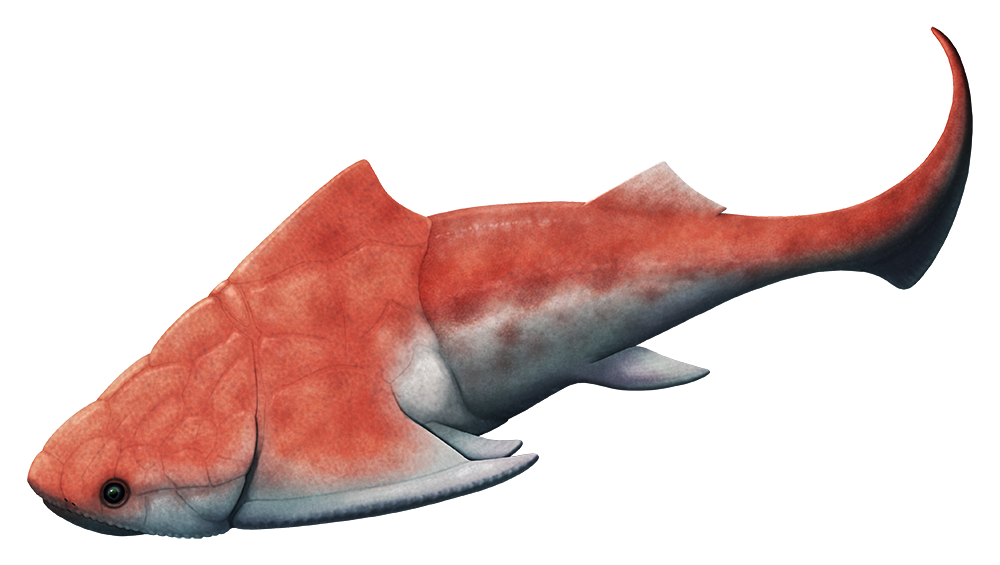The armor-headed placoderms were the dominant fish during the Devonian period, evolving a wonderfully diverse range of shapes and sizes, and occupying ecological niches in both marine and freshwater habitats.
Groenlandaspis antarctica here lived during the mid-to-late Devonian, about 383 million years ago, in the Oates Land region of Antarctica – at that time located further north than it is today, with the local climate being warm and subtropical.
It was a moderately-sized river-dwelling placoderm, around 50cm long (1’8″), and its bony armor formed a sort of pyramid shape with wing-like projections at its sides, a structure that would have acted as a hydrofoil and made it an efficient swimmer. Most of the armor plates were rigidly fused together, except for a hinge point between its head and thorax that allowed it to open its jaws, but unlike its more famous relative Dunkleosteus it couldn’t gape its mouth open particularly wide. It may have been a bottom-feeder, grubbing around in muddy riverbeds and using its small but strong jaws to crush hard-shelled prey.
Various other species of the Groenlandaspis genus have been found all around the world, but there’s something incredibly rare and special about Groenlandaspis antarctica in particular:
We actually know what color it was.
Preserved pigment cells in its fossils indicate that it was red on top and silvery-white on its underside in a countershaded pattern, camouflaging it in the murky silty waters of the ancient Antarctic rivers.
…And also made it look a bit like a prehistoric goldfish.

